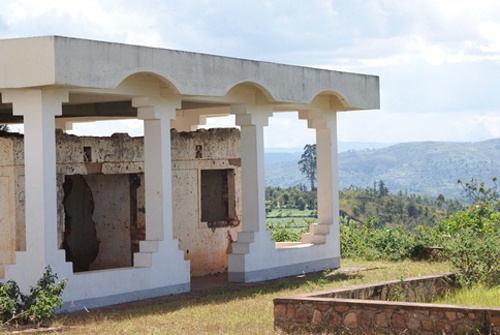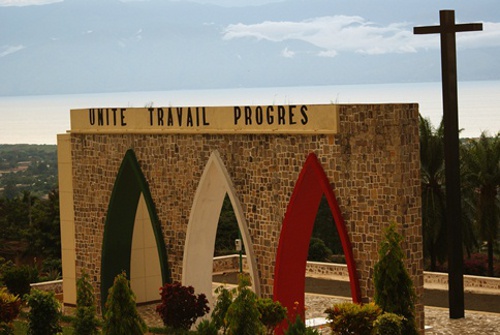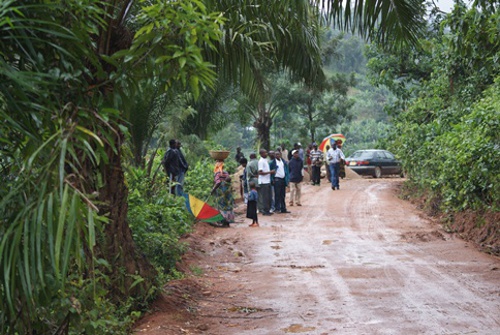To the uninformed outsider there are no visible signs of what occurred in 1996. Deep in the interior of Bubanza province, north-western Burundi, the thick vegetation and rolling hillsides bear no obvious scars of violence or international crimes. Yet the people whose lives continue to be affected after more than fifteen years recall the events with vivid lucidity. The memory of one morning of violence that left more than 300 people massacred at the hands of the army has become the very thing that defines many hardships of the present, even (remarkably) for those not witness to the bloodshed. For the people of this tiny village, memory and the way it is dealt with is both a window to the past and a door to the future.

Indeed, whilst transitional justice is now the rule after gross human rights violations, opinion in recent years has begun to look beyond the classical institutions to a broader approach to tackling impunity on the basis of victims’ rights to truth, justice, reparations and non-recurrence. Developments have witnessed the emergence of memorialisation as an international norm to which states must adhere as part of their obligations to guarantee victims’ rights. With the preponderance of criminal justice, particularly as the International Criminal Court extends its reach, these developments are crucial to ensuring that voices from the grassroots of gross human rights violations are not forgotten. For while opinion in Bubanza speaks of justice, the desire for truth about the events of 1996, together with mechanisms for dealing with the past outside of formal institutions, are clearly articulated. One of those desires is for memorialisation.
Dilemmas and problems nevertheless remain omnipresent.
Ensuring grassroots ownership is one such dilemma, but which is key to ensuring positive impact. According to Protocol I of the 2000 Arusha Agreement, which started a process to end Burundi’s civil war, a national monument inscribed with the eternal words ‘Never Again’ has been placed on a hillside in Gitega. But this national initiative now stands idle, fenced off from visitors. Inaugurated to symbolically repair the country’s past ills, many communities are oblivious to its existence. Others in Bubanza turn off the radio at the first mention of Arusha. Thus, despite memorialisation not having been appropriated to impose a one-sided narrative of the past as has occurred in Rwanda, national monuments have still failed to gain purchase within communities like Bubanza. The disconnect is tangible, with policies from the top failing to penetrate into the appreciation of efforts to deal with the past, summed up by the invisibility of such policies and the belief that the authorities are sleeping. Yet, Burundians remain alive to the acute threat of imposed memory and the risks of memorialisation, particularly as practiced across the border. Referring to state-sponsored initiatives displaying the bones of victims, Rwandans are criticised for 'selling the bones of their brothers'.

A lack of clarity also surrounds the incorporation of victim, perpetrator and bystander categories into memorialisation efforts. The crudeness of these categories is contradicted by the complex practice of mass crimes, meaning that these presupposed distinctions lose relevance in a wider context. Particularly those static ventures of memorialisation seem incapable of honestly capturing this fact. Once again we can defer to Bubanza, where the perpetration of a horrific massacre in and of itself does not convey the whole history of violence and politics against which it was perpetrated in Burundi. Even intentionally taking the massacre in isolation in order to serve that community’s needs carries dilemmas, starting with the definition of victims. According to survivors, victims can be variously defined, including those buried in three mass graves, their orphans who were left behind, and those left with severe physical disabilities. Perpetrators are equally diverse. The massacre bore witness to soldiers who refused to participate, as well as trusted acquaintances who aided the violence. The context of corruption and bad governance also occupies the minds of survivors with any mention of perpetrators. Defining the actors during one morning of violence is both daunting and somewhat paradoxical.

Perhaps as a consequence of these complexities, a longing for truth underpins the entire discussion in Bubanza. In a context where no investigation has yet taken place, this is unsurprising. But truth in itself is not free from ambiguity. By its very nature it cannot be separated from personal interpretations and bias. Facts become subjected to a process of distillation, which equally influences the memory of events, even at a collective level. As is so often the case after violence, one person’s truth is another’s fiction, and so establishing a truth that satisfies all, particularly in a context of sustained violence, cannot be taken lightly. Burundi is a perfect illustration. For many, ‘truth’ is a falsehood, inseparable from political and ethnic divisions, the subjective truths sustained by political parties, a culture of deceit and manipulation, and the memory of the past handed down from ancestors. But its absence in Bubanza violates each person’s right to the truth, consequently fuelling impunity.
The task facing civil society and practitioners engaged in memorialisation is fraught with difficulties. Together with academics there is a need for greater understanding and research, which must begin with grassroots experiences.
The contribution of memory initiatives to processes of accountability and reducing impunity was the subject of a debate series conducted by the Dutch NGO, Impunity Watch, which engaged youth, experts and policymakers. In the report, “Understanding the Role of Memory Initiatives in Communities Struggling with Impunity”, the principal findings and recommendations of this series can be found.









